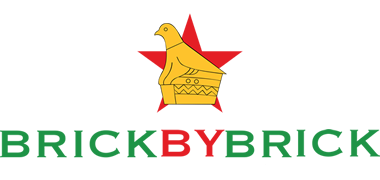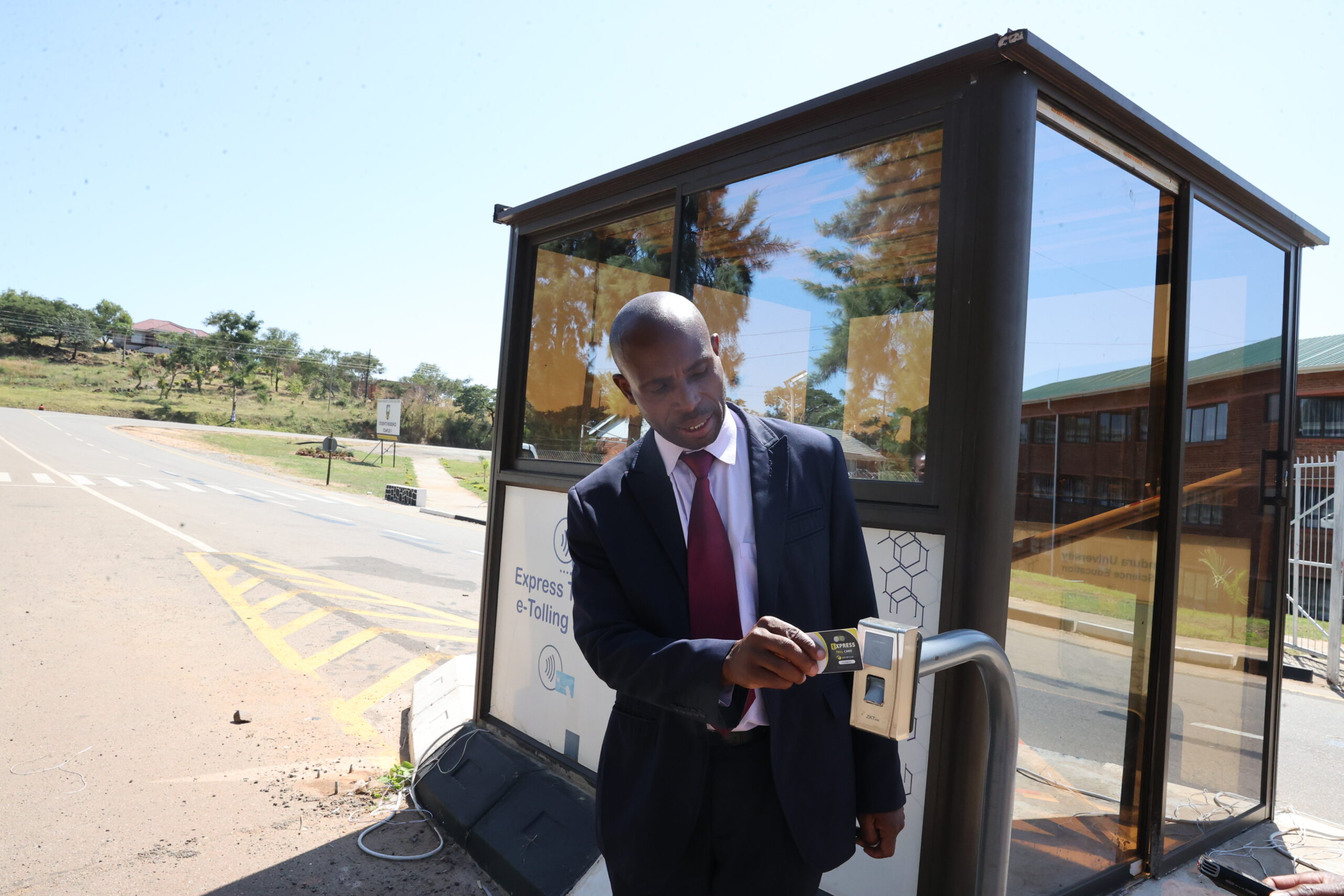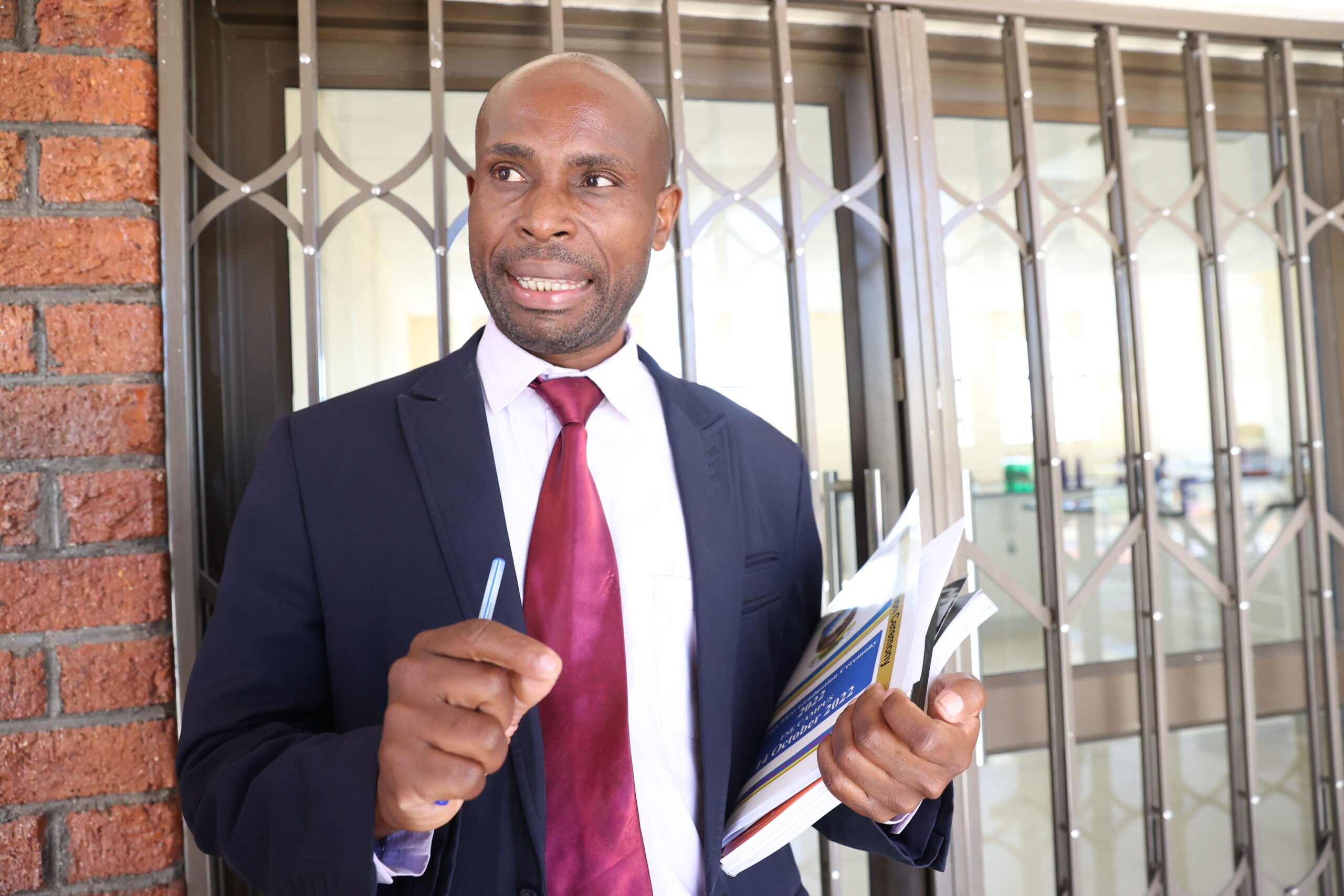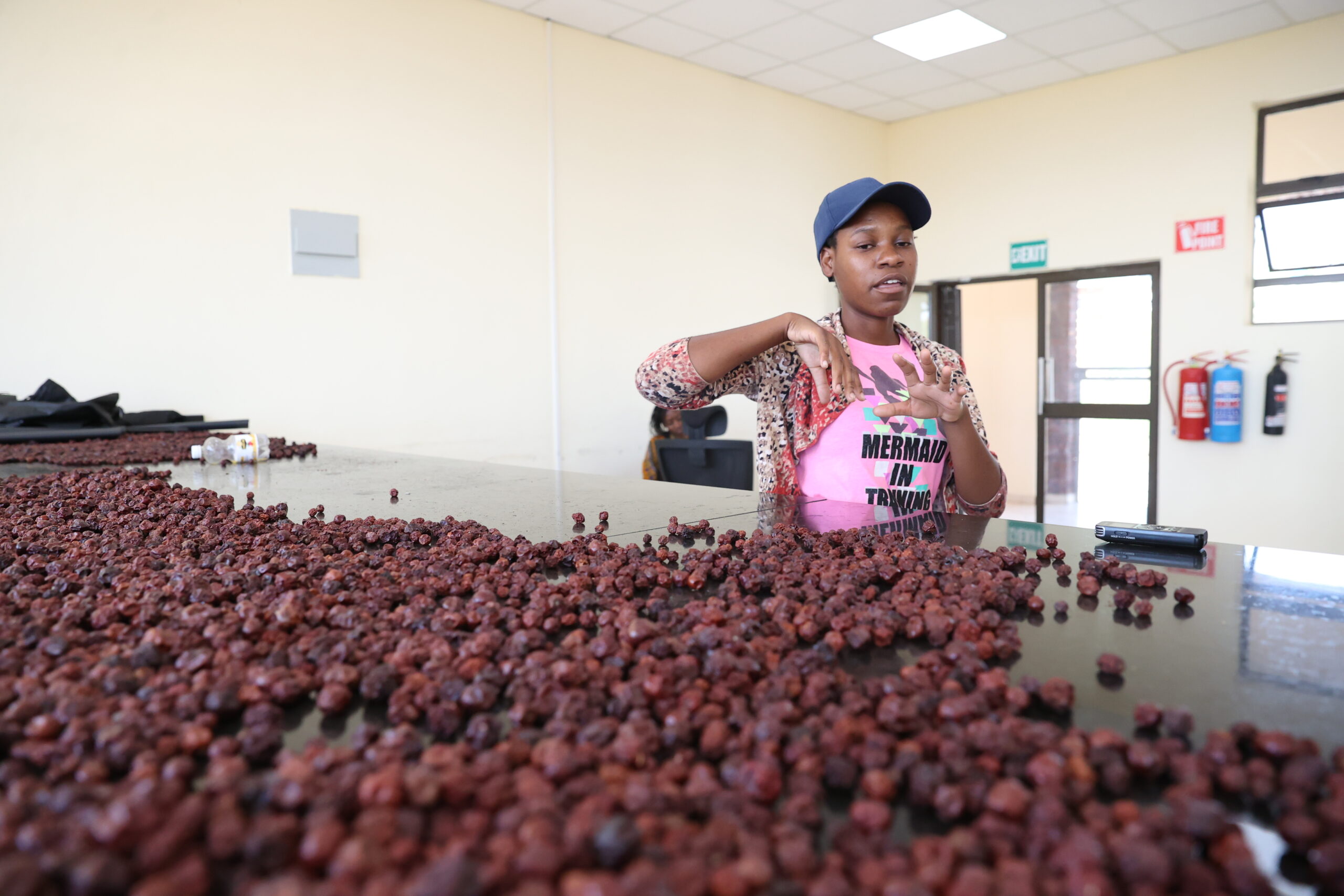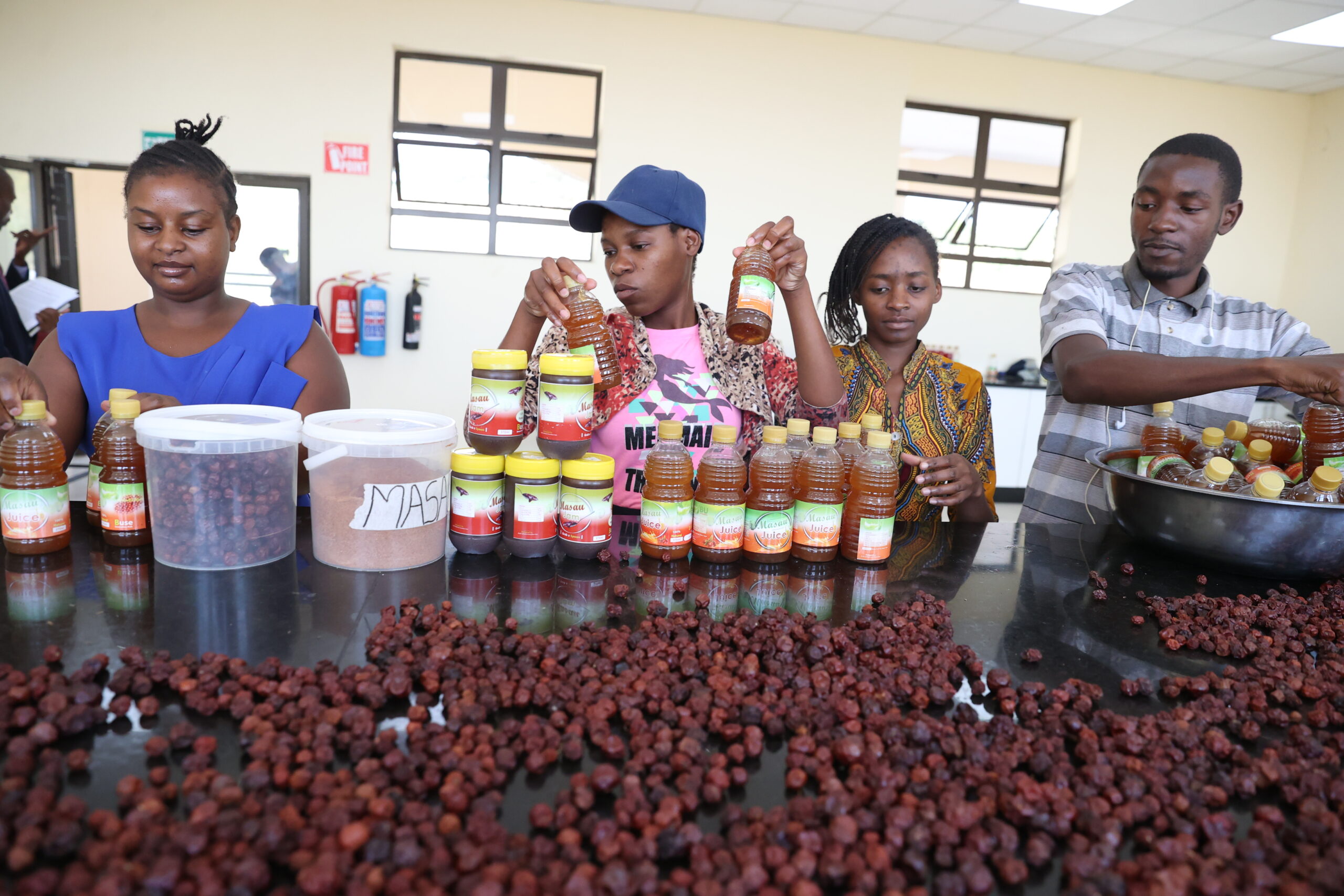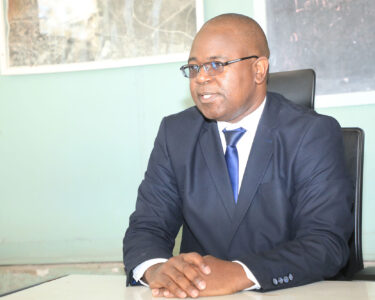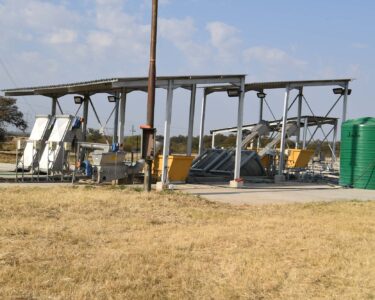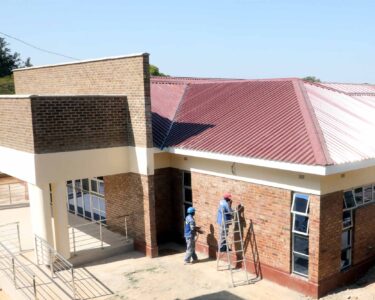Prof Courtie Mahamadi, Director of Research and Innovation at the Bindura University of Science Education (BUSE), talked to Brick by Brick about the merits of the university’s Innovation Hub and others beyond.
“Basically, our major mandate is to try to explore locally-available resources, particularly medicinal plants, and get information from indigenous knowledge systems.
There are certain plants and herbs that our forefathers have been using for long periods, and they have been proved to work, but there is the need now to scientifically prove that they work by doing extractions and improving their efficacy, so that we are able to really characterise what components of the plants really work.
And once we do that, and because we know that some of the plants are available in limited quantities, we then have to go to the lab and do what we call in chemistry, ‘retrosynthesis’.
We have now identified the particular compound that works, we then manufacture those compounds on large scale, using other methods mimicking the exact products we got from nature, so that we can now do mass-scale production, using other chemicals. This is basically what we are trying to do here at BUSE’s Innovation Hub.
We have five attached students who are here, who range from undergraduate to masters students, and one PhD student as well, working in the lab.
We have produced five products. These include anti-fungals, herbal toothpaste, a mouth wash based on herbs and cosmeceuticals (beauty products that combine cosmetics and therapeutic properties, so they both beautify and heal a person). Last year alone we filed 7 copyrights and 5 patents based on these products.
Under the same cluster, we have also produced at the Innovation Hub a chemical that we call sodium silicate. It is a chemical used by municipal authorities in water treatment. Basically, we use aluminum sulphide, that is the key, and then sodium silicate as well.
In Harare, they use up to half a tonne of sodium silicate per day. And we are importing it from South Africa, India and China. So we are trying to do import substitution and produce it locally.
We are not selling it yet in the market. We have done trials and have tested the product with the City of Harare, and they certified our product last year. They certified that our product is very good, in fact better than the imported ones which require 0.5 milligrams a litre dosage. So for every litre of water they have 0.5 milligrams of that substance.
But with our product, when they tested it, they discovered that they require 0.3 milligrams compared to 0.5 milligrams, so they will be saving that much money to meet the same operational properties.
So we have done those tests, so it means the City of Harare is one of our off-takers. But we are not ending there, we are also going to Bulawayo, Gweru and other municipalities in the country. The same chemical is also required in the mining industry when they do floatation of gold, platinum and other ores. So we are also approaching those companies.
The project is being supported by the government itself, so what we are waiting for now is the release of the capital by the government. We sent a proposal, they asked us to review it a little bit. We have engaged partners like Verifying Engineering, they are doing the plant designs and they have in fact finalised them.
Once we get those industrial designs, we will be moving to sourcing the industrial equipment, we have approached companies in India and we are satisfied with the potential suppliers of the equipment that we need. So we are really good to go on that.
Q: What is the importance of innovation hubs?
A: Traditionally, we were stuck in what we called Education 3.0, where we were just focusing on teaching, research, and community engagement. A professor would be happy just to publish some papers, articles, and scientific papers, and get promoted, and that becomes the end of it.
But under the Second Republic, the government has challenged universities, saying if productivity is not coming from the universities, then where else will it come from? That’s the challenge and we have really taken up the challenge and bought the idea.
And we have also risen together with the government to say really who is creating the industries? We are graduating students, thousands per year. But where are they going? If the brains are in the universities and the universities are not causing industrialisation, then certainly there is a challenge.
So we really appreciate the concept of innovation hubs, because they are where ideation will be entertained, where we scout for ideas from people. We just come here and brainstorm. People present their ideas and we filter them and assist them. It is multidisciplinary, we have people from the Faculty of Commerce and all over.
We come and listen to people who present the ideas, we shortlist those that are promising, and we help the students, staff and the community to develop those ideas into concepts.
After we get the concept notes, we move to the stage of proof of concept, where experiments are done to say, “ok, this might seem to help or this might work”. Then we develop a full-scale incubation in the Hub. So the Hub is the place where innovative ideas are generated and incubated to give us goods and services that we need. It was a missing link before the Second Republic, but it is now a game changer in our micro-economic development.
Q: Are students here excited about it?
A: Yes, the students are very excited about it. At BUSE in particular, we have what we call the Vice Chancellor’s Creativity and Innovation Grant for students, just targeting students. We work with the Office of the Dean of Students to call for innovative ideas, so students are pretty excited about it, they are really excited about the opportunity that the Hub presents.
We have enrolled more than 50 students for different projects at the Hub. One of the projects that people have been talking about is Smart Connect, which is an innovation that seeks to provide a platform for agric-business. It emanated from the funding of the Vice Chancellor’s Creativity Grant for students.
Brick by Brick talked to some students at the BUSE Innovation Hub
Calisto Rugora
Junior Software Developer, 26 years old
We are seven in number at this software innovation hub. We are working on several ongoing projects. Some of them are about to go on the market. We have an SOS app that deals with issues requiring medical attention. It is an application which, if you are involved in an accident for example, and you need medical assistance, you can use the app to contact the police or the nearest hospital.
We also have an app called Smart Homes and Smart Offices. From your phone, this one can turn on and off your stove and other electrical gadgets from wherever you are.
We have another one for ZIMPOST that deals with e-parcels, it is like an Uber. When you want to send a parcel, say, to Mt Darwin, you use the application by entering your details which will be stored by the system. You are then given a reference number which you can give to the recipient of the parcel who will use the number to collect the parcel when the bus reaches the destination. We are using local ZUPCO buses. It is a partnership between BUSE and ZIMPOST.
We also have the City Pin, which, for example, you are travelling from Bindura to Harare, you can use to report say a pothole in the road. You can pin it and the application can pinpoint the location.
As of now, we don’t have any app rolled out yet. But very soon we will roll out the ZIMPOST one into the market. Then we have the ZINARA smart toll project. We also have a quality assurance app, which we are now piloting. These three are closest to being rolled out.
There is yet another one, Easy Appointments. For example, if you go to Arlington, you need to do paper work before you enter their premises. So we have come up with an app which allows you to do the booking or set up the appointment while you are still at home. So that when you arrive, the clearance would have already been given and you are not delayed at the gate. This app has already been finished, but not yet rolled out. We need support from industry to fund these projects.
Q: What is motivating you to come up with all these apps and projects?
A: Education 5.0 has given us a chance to exercise our abilities. Outside Zimbabwe, the systems we are working on now are already in existence, but we don’t have them here in Zimbabwe. So we are coming up with these innovations to help our nation to reach the same level attained by the other countries.
Q: Is it something that is exciting to students?
A: Yeah, when you develop something that is rolled out, it makes you feel that you are going somewhere, because you want to prove to the world that you too can do something. Whatever we do, we do it with passion because we need to reach a certain point as a software innovation hub.
Enesia Magora
BUSE biotechnology
Here, we are dealing with the masawu fruit. We are producing yoghurt, jam and juice [soft drinks] from masawu. For the juice, we deal with the whole fruits. We don’t use fresh masawu because it has a slimmy aftertaste. We use the dried ones. We boil them, squeeze them, and filter them.
We are five attaches here and our supervisor. Our ages range from 21 to 22. We are all students of BUSE.
Our inspiration is coming from the fact that there are other fruits, including bananas, which are exotic, so we want to try our indigenous fruits. Masawu has potassium and it is high in fibre, so it acts as a laxative and good for the immune system.
We haven’t rolled out anything into the market yet. A factory is going to be built at Muzarabani where the fruit is plentiful, but for now we are just making products that are being sold at the university’s main campus. The products have not yet gone out of the university yet. We are piloting the juice on the campus before going commercial. We don’t when we will go commercial. The bosses can tell.
CAPTIONS
Pic 1:
Prof Courtie Mahamadi, BUSE’s Director of Research and Innovation demonstrates to Brick by Brick how the university’s new e-toll solution works
Pic 2:
Prof Courtie Mahamadi: “Under the Second Republic, the government has challenged universities, saying if productivity is not coming from the universities, then where else will it come from? That’s the challenge and we have really taken up the challenge and bought the idea”
Pic 3
Calisto Rugora, a junior software developer (foreground of photo), explains to Brick by Brick what happens at his unit, and says: “Education 5.0 has given us a chance to exercise our abilities. Outside Zimbabwe, the systems we are working on now are already in existence, but we don’t have them here in Zimbabwe. So we are coming up with these innovations to help our nation to reach the same level attained by the other countries
Pic 4
Enesia Magora and BUSE’s new-found love for the masawu fruit. “We are producing yoghurt, jam and juice from masawu,” Enesia says. “Our inspiration is coming from the fact that there are other fruits, including bananas, which are exotic, so we want to try our indigenous fruits. Masawu has potassium and it is high in fibre, so it acts as a laxative and good for the immune system”
Pic 5
Enesia Magora (centre) and other students at BUSE’s Innovation Hub show Brick by Brick the juices, jam and yohurt that they have produced from masawu

